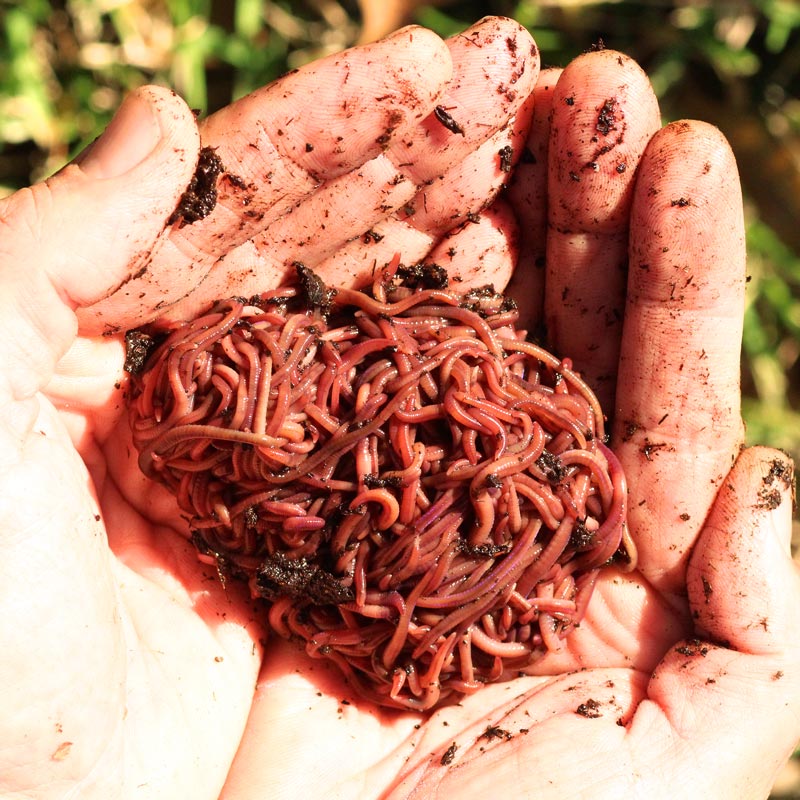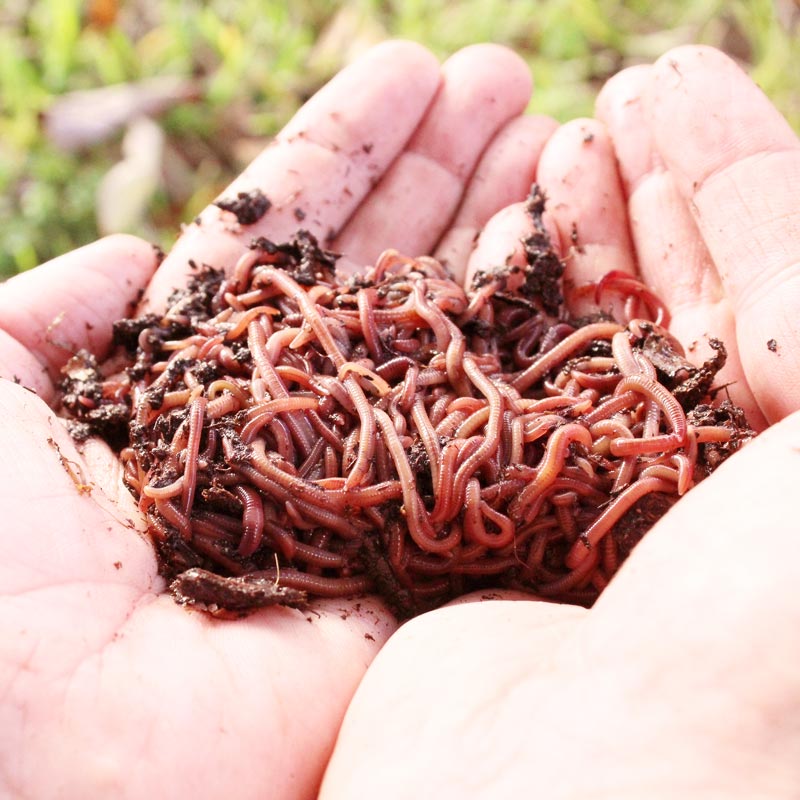Red Wiggler Worms - Perfect for Vermicomposting and Soil Enrichment
Red Wiggler Worms - Perfect for Vermicomposting and Soil Enrichment
Blog Article
Red Wiggler Worms Demystified: Unlocking the Secrets of Vermiculture for Greener Living and Nutrient-Rich Dirt
In the world of lasting practices for enhancing dirt top quality and promoting eco-conscious living, red wiggler worms play a critical yet commonly forgotten duty. These simple animals possess the impressive capability to transform natural waste right into nutrient-rich spreadings that function as a powerful all-natural plant food. By delving right into the globe of vermiculture, one can reveal a variety of benefits that extend much past conventional composting methods. Comprehending the details of caring for these worms, optimizing their atmosphere, and harnessing their castings can lead to a greener lifestyle and much healthier soil for plants to prosper.
The Role of Red Wiggler Worms
Red Wiggler worms play an important role in composting systems by efficiently breaking down raw material into nutrient-rich castings. These voracious eaters consume a variety of organic materials, such as kitchen area scraps, lawn waste, and paper items. As they feed, the worms' digestive procedures damage down the organic issue right into a penalty, dark, and nutrient-dense material understood as worm castings or vermicompost.
The spreadings produced by Red Wiggler worms are highly advantageous for dirt wellness and plant growth. They are rich in crucial nutrients like potassium, nitrogen, and phosphorus, which are vital for sustaining healthy and balanced plant advancement. In addition, worm spreadings have advantageous germs and enzymes that aid enhance dirt structure, rise water retention, and improve nutrient uptake by plants.
Benefits of Vermicomposting

In addition, vermicompost, the nutrient-rich end item of vermicomposting, works as an exceptional natural plant food and dirt conditioner. It enhances dirt structure, enhances dirt oygenation, and increases dirt dampness retention. These residential properties add to much healthier plants with stronger origin systems and far better resistance to conditions and pests. Vermicompost additionally improves the dirt with essential nutrients like nitrogen, potassium, and phosphorus, advertising plant development and total dirt fertility.
In addition, vermicomposting supports lasting horticulture techniques by providing a chemical-free and natural choice to artificial plant foods. Red Wiggler Worms. This environmentally friendly approach not only enriches the dirt but likewise helps in reducing reliance on damaging chemicals, promoting a greener and a lot more sustainable method of horticulture
Establishing a Worm Container
When developing a worm bin for vermicomposting, appropriate arrangement is essential to make sure the success of the composting procedure. The very first action in establishing up a worm bin is choosing an appropriate container.
After including the bedding, present the red wiggler worms to the bin. It is recommended to begin with a small number of worms and slowly boost as they multiply. The worms must after that be offered with food scraps such as fruit and veggie peels, coffee premises, and eggshells. It is important to prevent adding meat, dairy, oily, or salted foods to stop attracting insects and creating unpleasant odors.
Routinely keep track of the dampness levels and temperature level in the worm bin to make certain optimum conditions for the worms. With correct setup and maintenance, the worm bin will efficiently transform natural waste into nutrient-rich garden compost for your plants and garden.
Harvesting Worm Spreadings
To efficiently gather nutrient-rich worm castings from your vermicomposting system, a methodical harvesting method is important. When it comes time to harvest the worm spreadings, there are a couple of key actions to comply with to make sure an effective process. First of all, stop adding fresh food scraps away of the worm container for a couple of weeks prior to harvesting. This motivates the worms to migrate to the side with fresh bed linens and food, making it much easier to dig the castings from the other side.

Troubleshooting Common Issues
Determining and dealing with typical challenges that may occur during the vermicomposting procedure is critical for preserving a healthy and productive worm bin. One usual concern that vermicomposters encounter is overfeeding. Adding excess food scraps can lead to a build-up of dampness and acidity in the worm bin, possibly harming the worms. To stop this, feed the worms in moderation, making sure that the food read the article scraps are effectively broken down before including more. Another problem is unpleasant smells originating from the worm container. Foul smells show anaerobic conditions, generally brought on by overwatering or insufficient ventilation. To correct this, readjust the moisture degrees by including dry bed linen products like shredded paper or cardboard and rise aeration by transforming the bedding regularly.
Furthermore, if the worm populace is decreasing or the worms appear unhealthy, maybe because of environmental stress factors such as extreme temperatures or pH degrees. Keeping track of these aspects and making essential modifications is crucial for the well-being of the worms. By repairing these common concerns without delay, vermicomposters can make certain a smooth and effective vermicomposting process while preserving a prospering worm population.

Final Thought
In verdict, red wiggler worms play a critical function in vermiculture by breaking down natural issue right into nutrient-rich dirt. Setting up a worm container is necessary visit this website for successful vermiculture, and harvesting worm spreadings offers beneficial garden compost for horticulture.
As they feed, the worms' gastrointestinal processes break down the organic issue right into a penalty, dark, and nutrient-dense material understood as worm castings or vermicompost.
The spreadings produced by Red Wiggler worms are extremely useful for soil health and plant development. Including excess food scraps can lead go to my blog to a build-up of dampness and acidity in the worm bin, potentially damaging the worms.In addition, if the worm populace is declining or the worms show up undesirable, it can be due to environmental stressors such as severe temperatures or pH levels. Setting up a worm container is vital for effective vermiculture, and collecting worm spreadings supplies valuable compost for horticulture.
Report this page